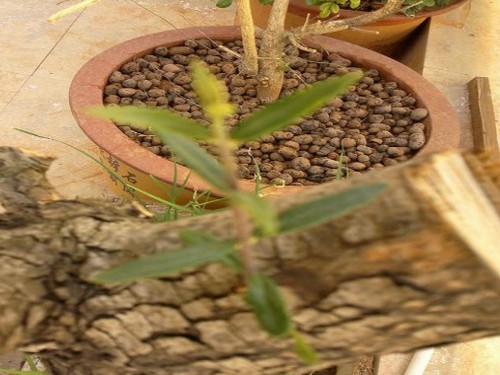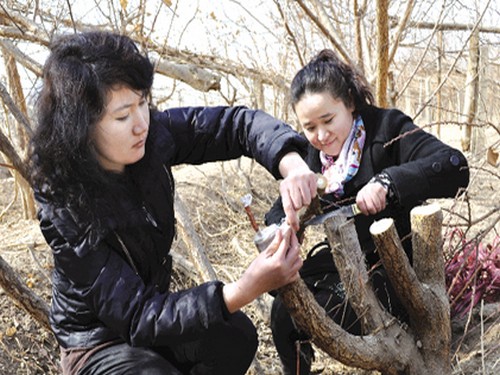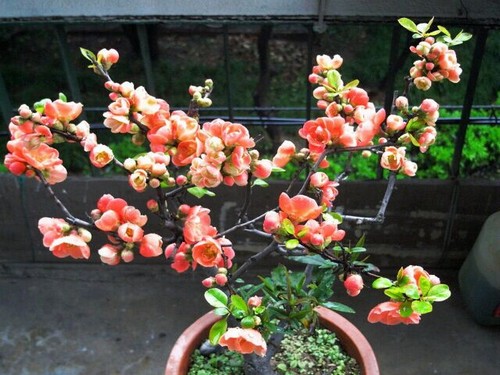Cultivation techniques of Robinia pseudoacacia
Robinia pseudoacacia wood is hard and resistant to moisture. Can be used for pillars, sleepers, vehicles, agricultural materials, leaves containing crude protein, is a good feed for many livestock, flowers are excellent nectar plants, Robinia pseudoacacia honey color white and transparent, welcomed by consumers, tender leaves are edible, has become a green vegetable for urban residents, seeds extract oil for soap and paint raw materials.

Robinia pseudoacacia can be used as street tree, residential greening tree species, soil and water conservation tree species, barren mountain afforestation pioneer tree species and so on. Foreign ornamental species Robinia pseudoacacia is rich in ornamental varieties, which can be found in many streets, courtyards, parks and botanical gardens (clones). So, how to plant Robinia pseudoacacia?
[seed treatment]
Robinia pseudoacacia pods change from green to reddish brown, and the pods become hard and dry, that is, they are mature, and seeds should be collected at the right time.
The pure seeds were obtained by sun exposure and removal of pericarp, blighted grains and inclusions. The pod emergence rate is 1020%, the 1000-grain weight is about 20g, and the germination rate is 8090%.
The skin of Robinia pseudoacacia seeds is thick and hard. Before sowing, the seeds must be treated by accelerating germination. Pour the seeds into hot water of 60-80 ℃, stir them fully with wooden sticks, mix them with cold water after 5~10min, make the water temperature drop to 30-40 ℃, then remove the impurities and bad seeds floating on them, fish out the good seeds after soaking for 24 hours, screen the unswollen hard seeds with a fine-eyed iron sieve when slightly dry, then soak the seeds in hot water, and put the swollen seeds into the basket. Cover the wet sack, put it in a warm place and rinse with warm water twice a day. The seeds can be sown after 5 days when the seeds germinate.
[land selection, land preparation and fertilization]
Robinia pseudoacacia seedlings are afraid of cold, waterlogging and alkali, so it is appropriate to choose fertile sandy loam soil with higher topography and convenient drainage and irrigation. The soil salt content should be less than 0.2%, and the groundwater level should be more than 1 meter. Choose irrigated land, or ripe land with deep and flat soil. Do not raise seedlings in waterlogged depressions and mountainous areas with poor soil. Robinia pseudoacacia is not suitable for continuous cropping, but it can be rotated with poplar and pine to prevent blight and avoid sticky soil to raise seedlings. Soil preparation requires intensive cultivation, soil preparation and fertilization in autumn, rake to preserve soil moisture in spring, and sowing after irrigation in early May.
[sowing]
Robinia pseudoacacia is easy to suffer from late frost damage when sowing in drought, so sowing should be late rather than early, and it is the most suitable for sowing around "Grain Rain" festival. Strip sowing in border bed or field sowing can be done. Generally, the seedling is raised in the field. The seedling ground is leveled first, and then the trench is sown, the row spacing is 30~40cm, the ditch depth is 1.0~1.5cm, the bottom of the ditch should be flat and the depth should be consistent, and the seeds are scattered evenly in the ditch, and then covered with soil thickness 1~2cm in time and gently suppressed. From sowing to seedling emergence for 6 to 8 days, the sowing rate is 60~90kg/ hm ^ 2.
[field management]
In Robinia pseudoacacia seedling cultivation, mastering the characteristics of drought tolerance, light preference and waterlogging tolerance is the key to ensure the survival of Robinia pseudoacacia seedlings.
1. Irrigation. Do not irrigate after sowing until the seedlings are ready. After emergence, when the soil moisture is moderate, it is necessary to loosen the soil and plough in time to increase the soil temperature and facilitate germination. Irrigation is too early, soil moisture is too large, soil temperature is low, easy to set seedlings or yellow leaf disease. On the basis of repeatedly ploughing and loosening the soil, water can be irrigated for the first time at the beginning of June, and then once every 20 days under normal circumstances. It was suspended for a period of time after irrigation in early July. In order to promote the seedlings to improve the Lignification degree and enhance the overwintering ability, the winter water was irrigated for the last time in late November.
2. Topdressing. When the seedlings of Robinia pseudoacacia were fixed, the first topdressing was carried out combined with the first irrigation, and urea 45~75kg/ hm ^ 2 was applied. At the end of June, combined with irrigation, the compound fertilizer mainly composed of nitrogen and phosphate fertilizer was applied twice, and the amount of fertilizer was 75~195kg/ hm ^ 2, and the fertilization was stopped at the beginning of August. It is best to rake the land in winter and early spring and apply rotten base fertilizer of 3000 jin to 5000 jin per mu. Spring soil preparation should be early, deep turning (more than 25cm), fine rake, leveling. In the soil preparation at the same time, 15 jin of black alum (ferrous sulfate) powder mixed with 5% phoxim 1 jin, and then mixed with 40 times the fine soil, sprinkled into the ground, in order to carry out soil disinfection.
3. Loosen the soil and weed. The seedling land should be ploughed in time after irrigation or rain, and it should be kept loose and grass-free.
4. Prevent the cold and survive the winter. The one-to two-year-old seedlings of Robinia pseudoacacia are vulnerable to autumn frost and spring wind drying, resulting in the drying of the aboveground part of the seedlings, so the one-year-old seedlings should be dug up after autumn for autumn afforestation or winter pseudo-planting, and afforestation should be provided in the second year and spring.
5. Transplant and cultivate big seedlings. To cultivate large seedlings needed for roads, courtyards and urban greening, Yuanzhou District is generally transplanted from late April to early May, and the transplanting density mainly depends on the seedling cultivation specifications and years. Generally, the row spacing of four-year-old transplanted seedlings should be 50cm × 100cm. The longer the years of nursery stock cultivation, the larger the row spacing of transplanted seedlings. Hole planting is often used in Robinia pseudoacacia transplantation. before transplantation, the aboveground part should be cut off and the root strips damaged by splitting should be cut off. The root length should be kept at 20~30cm, the seedling roots should be dipped in pulp, and the seedling depth should be the same as the top of the root neck and the surface. The transplanted seedlings should be nurtured in time, such as watering and topdressing, loosening soil and weeding, preventing cold and overwintering, especially for flat stubble seedlings, such as shoot removal, sprouting and pruning. Choose sturdy and upright branches as the trunk.
[pest control]
Robinia pseudoacacia is damaged by termites, leafhoppers, scales, locust aphids, beetles, longicorn beetles, black locust moths, mulberry winged moths, small wrinkle bugs and other pests. Robinia pseudoacacia seed wasp is the main seed pest, the damage rate can be as high as 80%. The diseases and insect pests of Robinia pseudoacacia seedlings include ground maggots, weevil, aphids, blight and so on. It was found that pest could be controlled by 1500 times of omethoate emulsion. For Rhizoctonia solani, at the beginning of the disease, spray with 50% benzoammonium 300 to 400 times, sterilize and protect seedlings.
Time: 2019-05-25 Click:
- Prev

Grafting technique of apricot tree
In recent years, with the promotion of apricot hot air drying room drying project in the three prefectures of South Xinjiang, the enthusiasm of the masses in South Xinjiang for planting apricot trees is getting higher and higher. The villagers of Suyitika Village, which has been planted for many years, are also seizing this opportunity to vigorously develop apricot industry, but the villagers are in urgent need of apricot grafting technology.
- Next

Planting technique of Tripterygium
Tripterygium has always been known as the immortal in the flower, the delicate beauty of the flower powder, the elegance of the white and the warmth of the red. There is a bit of pride in monopolizing the branches when there are no green leaves, so refreshing blooming in the spring. When there are green leaves, the delicate leaves also give birth to a delicate daughter, showing her face so softly and shyly.
Related
- Fuxing push coffee new agricultural production and marketing class: lack of small-scale processing plants
- Jujube rice field leisure farm deep ploughing Yilan for five years to create a space for organic food and play
- Nongyu Farm-A trial of organic papaya for brave women with advanced technology
- Four points for attention in the prevention and control of diseases and insect pests of edible fungi
- How to add nutrient solution to Edible Fungi
- Is there any good way to control edible fungus mites?
- Open Inoculation Technology of Edible Fungi
- Is there any clever way to use fertilizer for edible fungus in winter?
- What agents are used to kill the pathogens of edible fungi in the mushroom shed?
- Rapid drying of Edible Fungi

